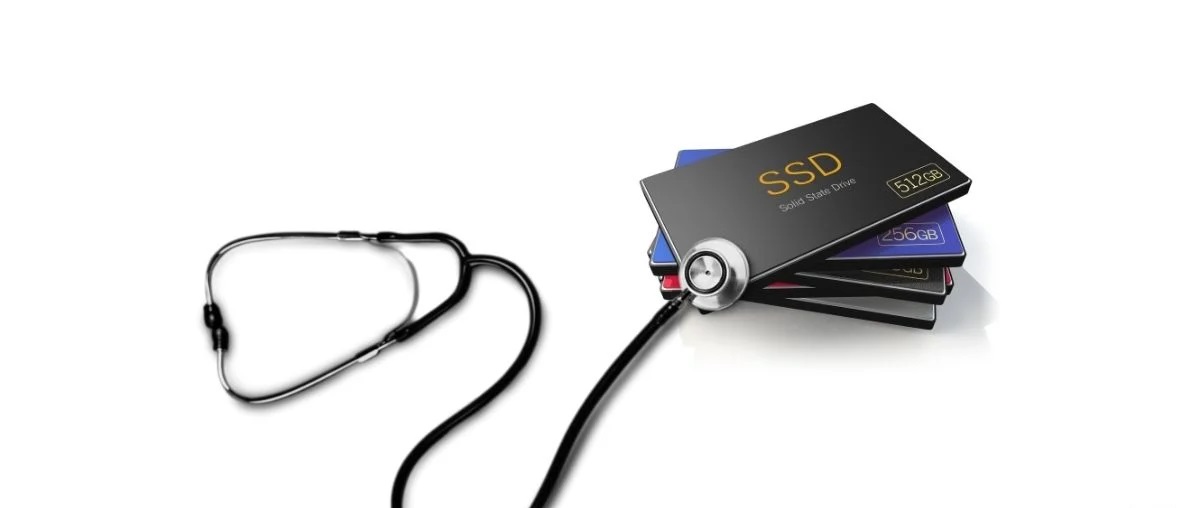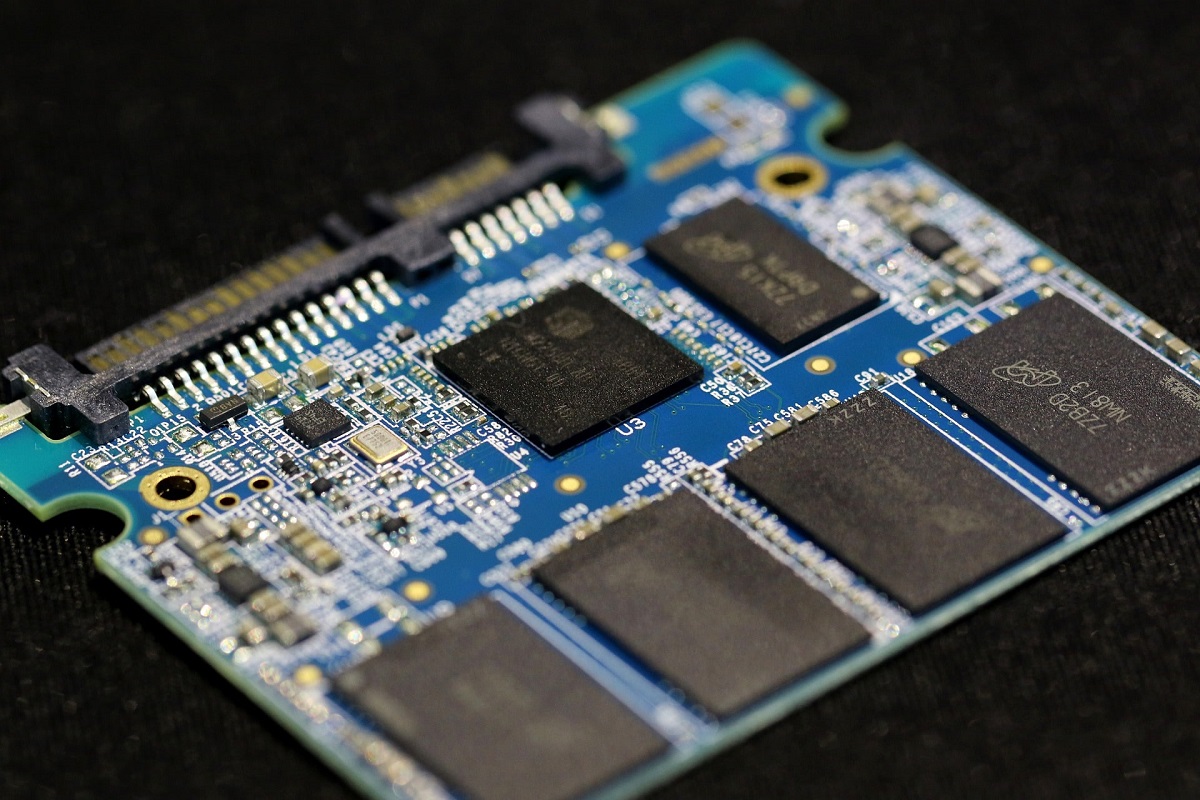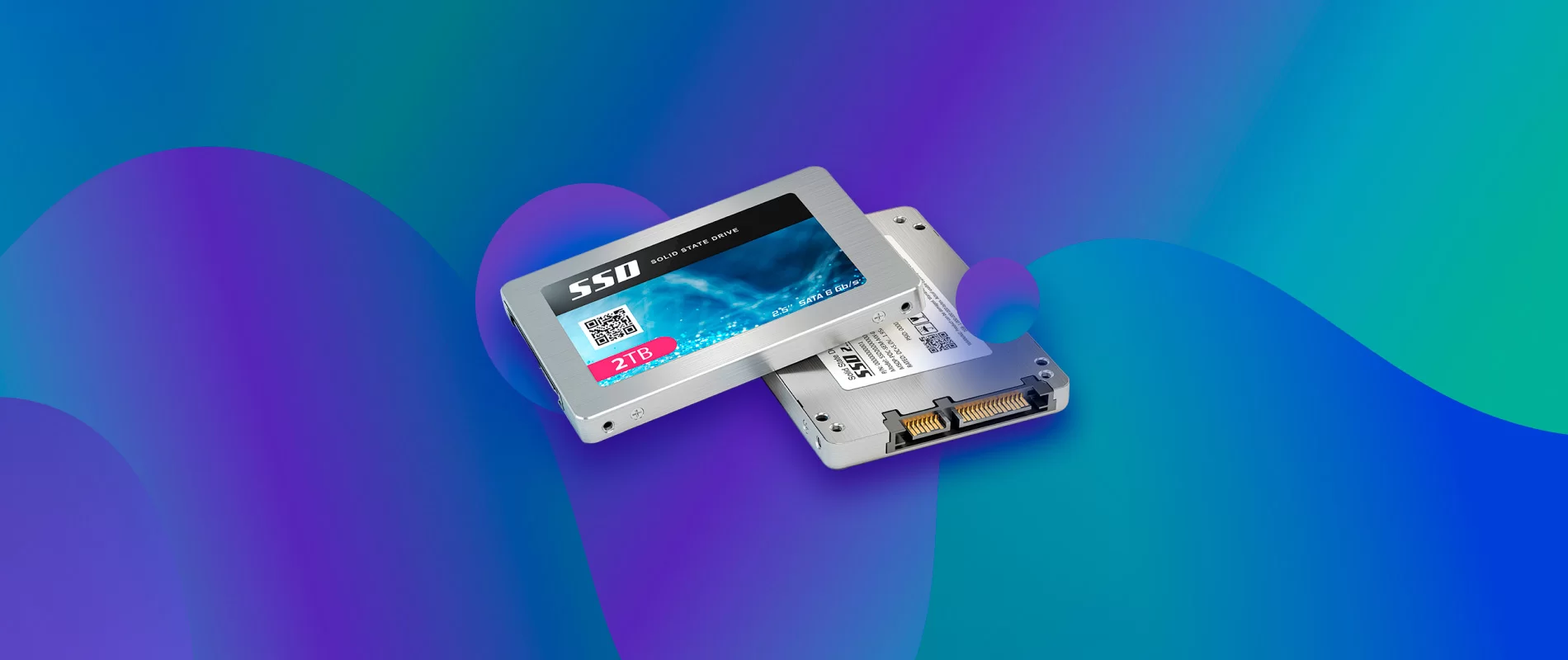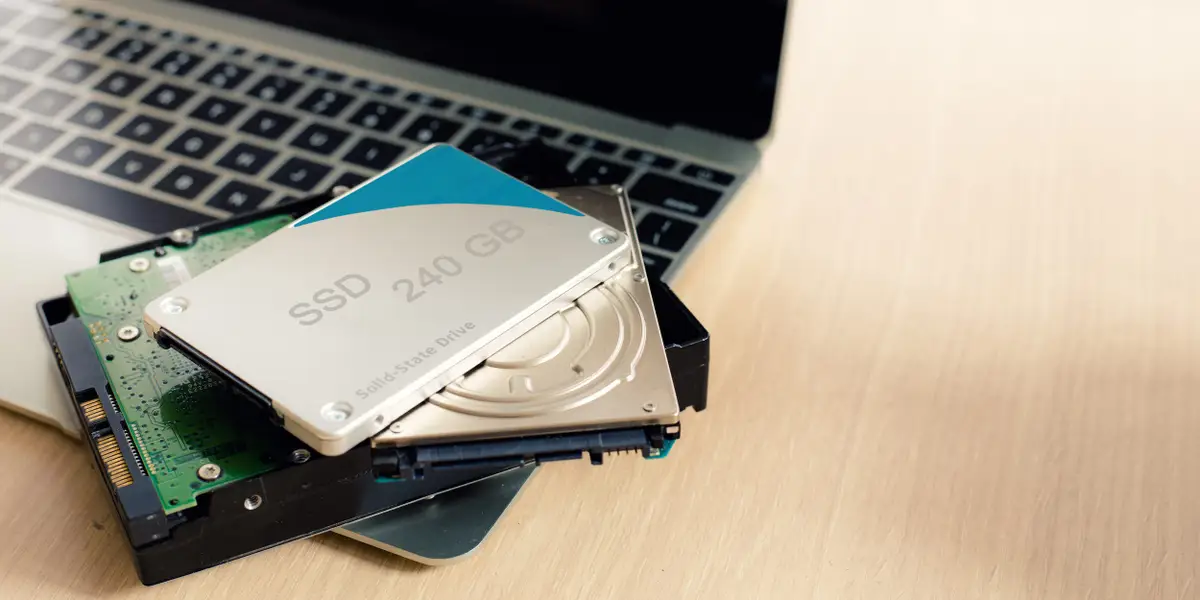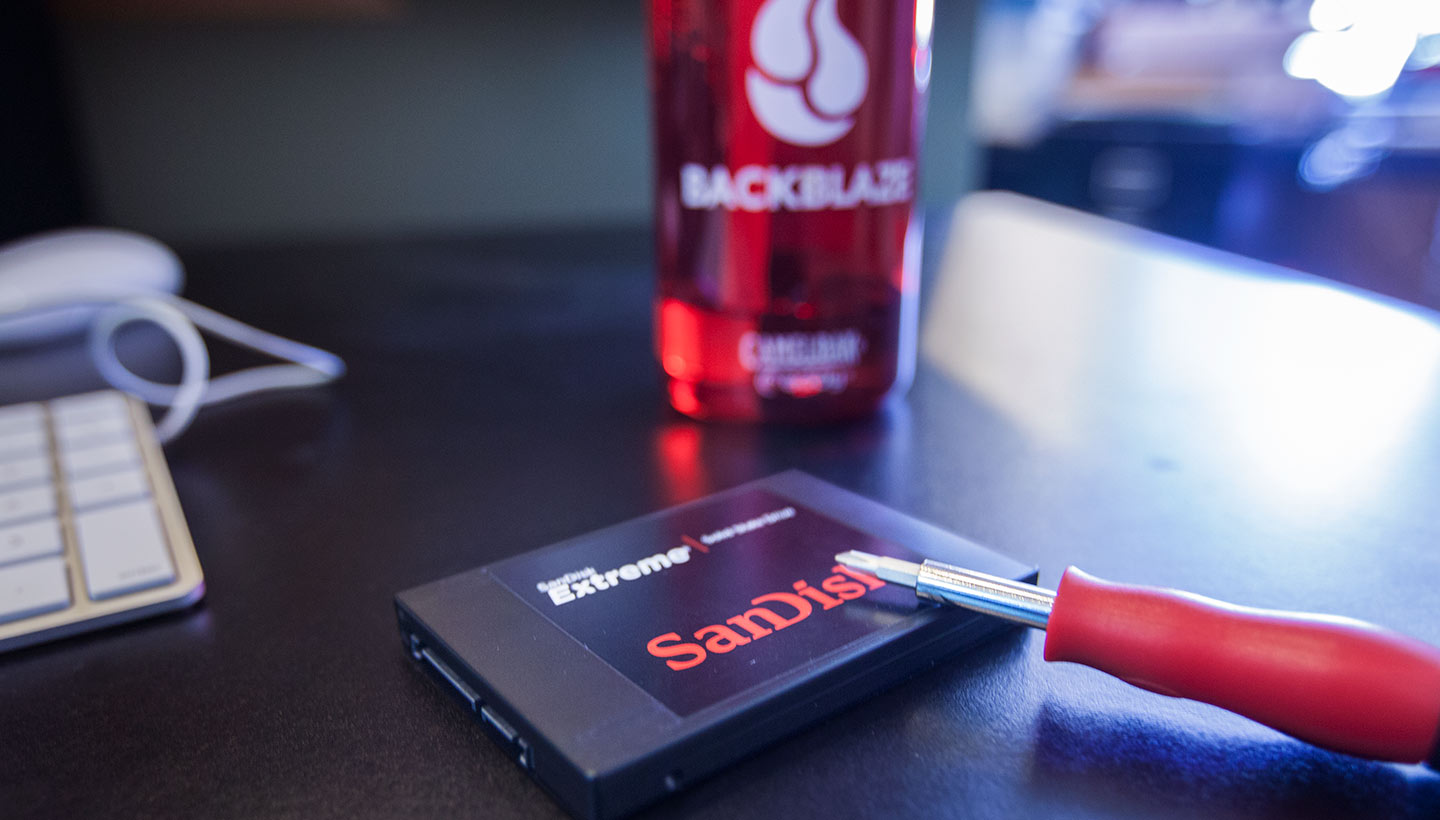Signs of SSD Failure
Solid State Drives (SSDs) are known for their reliability and fast performance. However, like any electronic device, SSDs can also experience failures over time. It’s important to be aware of the signs that indicate your SSD might be failing, so you can take appropriate action to prevent data loss and minimize downtime. Here are some common signs to watch out for:
1. Slow Performance: One of the early indicators of an SSD failure is a noticeable decrease in performance. If your once speedy SSD is now taking longer to boot up, load applications, or transfer files, it could be a sign that the storage cells are deteriorating.
2. Frequent Freezing or Crashing: If you experience frequent system freezes or crashes, it may be due to the failing SSD. When an SSD starts to fail, it can cause erratic behavior in your system, leading to instability and crashes during normal operations.
3. Blue Screen of Death (BSOD): The dreaded blue screen with error messages can also indicate potential issues with your SSD. If the BSOD becomes a recurring problem, it’s worth investigating the possibility of a failing drive.
4. Disappearing Files or Corrupted Data: Another sign of a failing SSD is the sudden disappearance of files or the presence of corrupted data. If you find that files are missing or become inaccessible, it could indicate that the SSD’s storage cells are becoming unreliable.
5. Unusual Clicking or Grinding Noises: Unlike traditional hard drives, SSDs are typically silent. If you start hearing unusual clicking, grinding, or buzzing sounds coming from your computer, it could be a sign of mechanical failure in your SSD.
6. S.M.A.R.T. Warnings: Self-Monitoring, Analysis, and Reporting Technology (S.M.A.R.T.) is a feature present in most modern SSDs. S.M.A.R.T. can detect potential issues in real time and warn you if your SSD is on the verge of failure. Keep an eye on any S.M.A.R.T. warnings to catch problems early on.
Overall, it’s essential to pay attention to these signs of SSD failure and take immediate action if you suspect your SSD is failing. Regularly backing up your data, running diagnostic tools, and seeking professional help are some of the steps you can take to mitigate the risks associated with SSD failures. Remember, prevention is key in maintaining the longevity and performance of your SSD.
Common Symptoms of Failing SSDs
When a solid-state drive (SSD) starts to fail, it often exhibits common symptoms that indicate potential issues with the device. Identifying these symptoms early on can help you take necessary actions to prevent data loss and avoid system failures. Here are the most prevalent symptoms of failing SSDs:
1. Boot Failures: One of the first signs of an SSD failure is the inability to boot your computer. If you find that your system is stuck in a boot loop or unable to load the operating system, it could be an indication of a failing SSD.
2. Disappearing Drive: Another symptom of a failing SSD is the drive suddenly disappearing from your system. You may notice that the drive no longer appears in the file explorer or disk management tools. This can be caused by issues with the SSD’s firmware or physical connection.
3. File Read/Write Errors: As an SSD deteriorates, it may encounter read or write errors when accessing data. You might experience file corruption, errors when copying files, or see error messages indicating data read/write failures. These errors can be indicative of storage cell degradation.
4. Random Freezes: If your computer frequently freezes or becomes unresponsive, it may be due to a failing SSD. As the SSD’s condition worsens, it can lead to system instability and cause your computer to lock up or crash during normal operation.
5. Overheating: Overheating is a common symptom of SSD failure. When an SSD starts to fail, it can draw excessive power or generate more heat than normal. You may notice your computer’s cooling fans running at full speed or experience frequent overheating warnings.
6. Sudden Power Outages: Another symptom of a failing SSD is unexpected power outages or system shutdowns. When an SSD encounters issues, it can cause your system to shut down abruptly, leading to potential data loss or file system corruption.
7. Bad Blocks: Over time, SSDs can develop bad blocks—sections of memory cells that are no longer reliable. These bad blocks can lead to data corruption or loss. If you encounter problems accessing specific files or notice system slowdowns when accessing certain areas of the SSD, it might be due to bad blocks.
If you experience any of these common symptoms, it is crucial to address the issue promptly. Backing up your important files and seeking professional assistance from data recovery specialists can help mitigate the risk of permanent data loss. Additionally, regularly updating your SSD firmware and running diagnostic tools can help identify problems early on and prolong the lifespan of your SSD.
Performance Issues to Look Out for
As an SSD ages or experiences problems, its overall performance may degrade over time. Recognizing the performance issues associated with a failing SSD is essential in identifying the need for maintenance or a potential replacement. Here are some performance issues to look out for:
1. Slow Boot Times: If your computer’s boot time has gradually increased, it may indicate an issue with your SSD. A healthy SSD should typically result in quick startup times. However, a failing SSD can cause delays during the boot process, resulting in significantly longer wait times.
2. Sluggish File Transfers: An SSD should provide fast data transfer rates, allowing for swift file operations. If you notice that copying or transferring files between drives or directories has become slow and unresponsive, it might be an indication of an SSD in decline.
3. Unresponsive Applications: As an SSD ages or experiences issues, applications may become slower to load, freeze, or become unresponsive. This can significantly impact productivity and user experience. If you notice a significant decrease in application performance, it may be worth investigating the health of your SSD.
4. High Disk Usage and System Lag: A failing or problematic SSD can lead to high disk usage, even when the system is idle. This can result in system lag, unresponsiveness, and delays when opening files or using resource-intensive applications. Monitoring disk usage can help identify if the SSD is contributing to system performance issues.
5. Increased Error Rates: Another performance issue associated with failing SSDs is an increase in read or write errors. You may notice error messages during file operations, such as “File is corrupt” or “Cannot read from the disk.” These errors can be a sign that the SSD’s storage cells are deteriorating.
6. Reduced Overall System Responsiveness: Gradually, you may notice a general decline in your system’s responsiveness, even during basic tasks. This can include delays when opening programs, browsing the internet, or accessing files. A failing SSD can negatively impact the overall performance of your system.
It’s important to note that while these performance issues can point to a failing SSD, they may also be indicative of other hardware or software-related problems. Therefore, it is recommended to conduct thorough troubleshooting or seek professional assistance to properly diagnose the cause of the performance issues.
If you suspect your SSD is at fault, backing up your important data and considering a replacement or repair can help ensure the continued smooth operation of your computer system.
Error Messages and System Crashes
When an SSD starts to fail, it can manifest through error messages and system crashes, indicating potential issues with the drive’s functionality. These error messages and crashes are warnings that should not be ignored, as they can lead to data loss and system instability. Here are some common error messages and system crashes associated with failing SSDs:
1. Blue Screen of Death (BSOD): One of the most severe indicators of SSD failure is the infamous Blue Screen of Death. When an SSD encounters critical errors or fails to communicate with the system properly, it can trigger a BSOD, resulting in a complete system crash. The error code displayed on the screen can provide valuable information about the issue.
2. “Disk Boot Failure” or “No Boot Device Found” Messages: If you receive messages like “Disk Boot Failure” or “No Boot Device Found” during startup, it could suggest an issue with the SSD. These messages usually indicate that the system cannot locate the operating system or boot files on the SSD, potentially due to a failing drive.
3. “Invalid System Disk” or “Non-System Disk” Errors: Similar to the “Disk Boot Failure” message, encountering messages such as “Invalid System Disk” or “Non-System Disk” can indicate SSD-related problems. These errors occur when the SSD fails to function as a bootable device, resulting in an inability to start the system.
4. “File System Not Found” or “Invalid File System” Errors: If you receive messages stating “File System Not Found” or “Invalid File System” when trying to access files or directories, it may be a sign of SSD failure. These errors suggest that the file system structure on the SSD has become corrupt or inaccessible.
5. “Disk Read/Write Error” Messages: When an SSD encounters issues reading or writing data, you may receive messages such as “Disk Read Error” or “Disk Write Error.” These errors indicate that the SSD is having trouble accessing or saving data to its storage cells.
6. Unexpected System Reboots or Shutdowns: A failing SSD can cause unexpected system reboots or shutdowns, disrupting your work or leading to data loss. These sudden disruptions may occur during regular system operation or when accessing specific files or applications.
If you experience any of these error messages or system crashes, it is critical to diagnose the issue promptly. Backing up your data, running disk diagnostics, and seeking professional assistance are recommended steps to minimize the risk of data loss and address SSD-related problems.
Remember, these error messages and system crashes can also stem from other hardware or software issues. Therefore, it is crucial to rule out any other potential causes before concluding that the SSD is solely responsible for the problems.
Disk Utility Tools to Diagnose SSD Problems
When you suspect that your SSD is experiencing issues, there are several disk utility tools available that can help diagnose and identify potential problems. These tools provide insight into the health, performance, and integrity of your SSD. Here are some commonly used disk utility tools for diagnosing SSD problems:
1. SMART Monitoring Tools: Most modern SSDs come equipped with Self-Monitoring, Analysis, and Reporting Technology (SMART). SMART monitoring tools allow you to check the health status and monitor various parameters of your SSD, such as temperature, wear leveling count, reallocated sectors, and more. Popular SMART monitoring tools include CrystalDiskInfo and SSD Life.
2. SSD Manufacturer’s Diagnostic Software: Many SSD manufacturers provide their own diagnostic software specifically designed for their drives. These tools offer comprehensive testing and analysis, allowing you to identify potential problems and gather detailed information about your SSD’s health. Examples of manufacturer-specific diagnostic software include Samsung Magician for Samsung SSDs and Kingston SSD Manager for Kingston SSDs.
3. Disk Utility (Windows) or Disk Utility (Mac): Both Windows and macOS operating systems have built-in disk utility tools that can be used to check the health of your SSD. These tools allow you to perform various functions, such as checking disk integrity, running error checks, and scanning for bad sectors. In Windows, you can use the built-in Disk Management tool, while macOS users can use the Disk Utility application.
4. Third-Party Disk Management Tools: There are various third-party disk management tools available that offer advanced diagnostics and repair features for SSDs. These tools often provide more in-depth analysis and information about your SSD’s health, including disk surface scanning, performance benchmarking, and data migration. Notable examples include AOMEI Partition Assistant, MiniTool Partition Wizard, and GParted.
5. SSD Toolkit or Toolbox: Some SSD manufacturers provide dedicated software tools, commonly known as SSD Toolkits or Toolboxes, that offer diagnostics, optimizations, and firmware updates. These tools help you monitor the health of your SSD and provide recommendations for improving performance. Examples include Intel SSD Toolbox, Crucial Storage Executive, and Western Digital SSD Dashboard.
When using SSD diagnostic tools, it’s important to follow the guidelines provided by the tool’s documentation or the manufacturer. Regularly running these diagnostics can help detect early signs of potential problems, allowing you to take appropriate action and minimize the risk of data loss. However, keep in mind that diagnostics tools can provide valuable information but cannot always guarantee a solution. For complex issues or critical data, consulting a professional or the SSD manufacturer’s support team is advisable.
SMART Monitor for SSD Health Check
Self-Monitoring, Analysis, and Reporting Technology (SMART) is a feature present in most modern SSDs that allows for monitoring and assessing the health status of the drive. SMART data provides valuable information about various parameters that indicate the overall well-being and performance of your SSD. Here’s how you can use SMART monitoring to check the health of your SSD:
1. SMART Attributes: SSDs report a set of attributes that indicate different aspects of its health and performance. These attributes include information such as temperature, wear leveling count, power-on hours, reallocated sectors count, and many more. SMART monitoring tools read and display these attributes, allowing you to analyze the current condition of your SSD.
2. SMART Monitoring Tools: There are several software tools available that enable you to monitor your SSD’s SMART data. These tools range from dedicated SSD manufacturer software to third-party applications. Examples of popular SMART monitoring tools include CrystalDiskInfo, SSD Life, Hard Disk Sentinel, and HD Tune. These tools provide a user-friendly interface, displaying the SMART attributes and their respective values, allowing you to track changes over time.
3. Interpreting SMART Data: SMART attributes have predefined thresholds that indicate when a specific attribute is reaching a critical level. Monitoring tools will usually highlight attributes that have exceeded the threshold to draw attention to potential issues. By examining these attributes and their values, you can identify potential problems and take preventive measures or seek professional assistance if necessary.
4. Warning Signs to Look For: Certain SMART attributes are more critical indicators of SSD health. For example, a significant increase in the reallocated sectors count can suggest that the SSD is reaching its maximum endurance and may be at risk of failure. Similarly, a high temperature reading could indicate overheating issues, potentially affecting performance and reliability. Monitor these attributes closely to catch warning signs in advance.
5. Consulting SSD Manufacturer’s Documentation: SSD manufacturers often provide detailed documentation about the specific SMART attributes relevant to their drives. By referring to this documentation, you can gain a better understanding of what each attribute means and its potential implications. This information can help you make more informed decisions in terms of maintenance, troubleshooting, and potential warranty claims.
Regularly checking your SSD’s SMART data is an effective way to monitor its health and preemptively identify potential issues. However, it’s important to note that SMART data is just one piece of the puzzle, and it cannot predict all SSD failures. In case of any significant changes in SMART attributes or persistent issues, it is recommended to consult with SSD manufacturers or experienced professionals for further diagnosis and assistance.
Crucial Temperature Monitoring for SSDs
Monitoring the temperature of your solid-state drive (SSD) is crucial to ensure optimal performance and prevent potential issues caused by overheating. SSDs generate heat during normal operation, and excessive heat can degrade performance, shorten lifespan, and even lead to system instability. Here’s why temperature monitoring is essential for your SSD:
1. Heat Impact on SSD Performance: SSDs can experience reduced performance when operating at high temperatures. As the temperature rises, the speed of data transfer and overall responsiveness of the drive can be negatively affected. Monitoring the temperature allows you to manage and optimize system cooling to maintain peak performance.
2. Thermal Throttling and Auto-Shutdown: To prevent damage caused by excessive heat, SSDs are equipped with built-in thermal throttling and auto-shutdown mechanisms. When the drive reaches a certain temperature threshold, it may throttle its performance to reduce heat generation or initiate an automatic shutdown to prevent overheating. Monitoring the temperature helps you identify if the drive is consistently reaching or surpassing these thresholds.
3. Prevent Premature Wear and Failure: High temperatures can accelerate the wear and tear of SSD components, particularly the NAND flash memory cells. Excessive heat can lead to increased cell degradation and reduce the lifespan of the drive. Temperature monitoring allows you to take proactive measures to mitigate the risk of premature wear and potential drive failure.
4. Impact on Data Integrity: SSDs can experience reduced data reliability and integrity when exposed to high temperatures for extended periods. Overheating can cause data corruption, errors during read or write operations, and even complete data loss. By monitoring the temperature, you can identify if heat-related issues are impacting the integrity of your data.
5. Optimizing Cooling Solutions: Monitoring the SSD temperature can help you evaluate the effectiveness of your current cooling setup. If you notice consistently elevated temperatures, it may warrant upgrading your system’s cooling solutions, such as adding additional case fans, optimizing airflow, or installing aftermarket heatsinks or cooling pads specifically designed for SSDs.
6. Using Temperature Monitoring Tools: Various software tools are available that allow you to monitor the temperature of your SSD in real-time. These tools, such as CrystalDiskInfo, SSD Life, and HWMonitor, provide temperature readouts and can often log temperature data over time. By actively monitoring the temperature, you can ensure that the drive remains within safe operating limits.
Regularly monitoring the temperature of your SSD is essential to maintain its performance, prolong its lifespan, and safeguard your data. By taking proactive measures to manage heat levels and optimizing cooling solutions, you can ensure that your SSD operates within safe temperature ranges, promoting its longevity and reliability.
Steps to Recover Data from a Failing SSD
When faced with a failing solid-state drive (SSD), the possibility of data loss can be a major concern. However, by following certain steps and employing appropriate strategies, you may still be able to recover your valuable data. Here are some recommended steps to recover data from a failing SSD:
1. Stop Using the Failing SSD: As soon as you suspect that your SSD is failing, it’s crucial to stop using it immediately. Continued use can exacerbate the issue and potentially lead to permanent data loss. Minimizing further writes or operations on the failing SSD helps to preserve the existing data and increase the chances of successful recovery.
2. Make a Bit-by-Bit Disk Image: Creating a bit-by-bit disk image is an effective way to preserve the data on your failing SSD. This involves creating an exact copy of the entire SSD onto another storage device. Tools like ddrescue (in Linux) or third-party software such as Clonezilla can help accomplish this task. This disk image will serve as a backup from which you can attempt data recovery without risking further damage to the original SSD.
3. Attempt Data Recovery with Software: After creating a disk image, you can use data recovery software to attempt to recover your data from the failing SSD. There are several reputable data recovery tools available, such as Recuva, EaseUS Data Recovery Wizard, or TestDisk. These tools can scan the disk image and attempt to recover lost or deleted files. It’s important to note that the success of data recovery largely depends on the extent of the SSD failure and the condition of the data.
4. Seek Professional Data Recovery Services: If the data recovery software is unable to retrieve your lost files or if the SSD failure is severe, it may be necessary to turn to professional data recovery services. These specialized services have the expertise and advanced tools to recover data from physically damaged SSDs or in cases where DIY recovery methods fail. They can safely handle the SSD and utilize specialized techniques to retrieve the data.
5. Replace or Repair the Failing SSD: Once data recovery attempts have been made, and your important files have been safely retrieved, you should consider replacing or repairing the failing SSD. Continuing to use a failing SSD is risky and may result in further data loss. Consult with a professional or the SSD manufacturer for guidance on the best course of action to take with regards to repair or replacement.
Remember, data recovery from a failing SSD is not always guaranteed. It is essential to have regular backups of your important data to minimize the impact of SSD failures. Prevention and preparedness are vital in protecting your valuable information from potential loss.
How to Prevent SSD Failure and Extend Lifespan
While solid-state drives (SSDs) are generally more reliable than traditional hard drives, they can still experience failures over time. To minimize the risk of SSD failure and extend its lifespan, proactive measures and regular maintenance are essential. Here are some effective strategies to prevent SSD failure:
1. Update Firmware: SSD manufacturers often release firmware updates that address bugs, improve performance, and enhance compatibility. Regularly check for firmware updates from the manufacturer’s website and install them as recommended. Keeping the firmware up to date can help mitigate potential issues and improve the overall stability of the SSD.
2. Avoid Extreme Temperatures: SSDs are sensitive to temperature extremes. Excessive heat can accelerate the wear and reduce the lifespan of the drive, while extreme cold can stress the components. Ensure that your computer system is adequately cooled with proper ventilation and airflow. Avoid exposing the SSD to prolonged periods of high temperature and protect it from extreme cold conditions.
3. Minimize Write Operations: SSDs have a limited number of write cycles before they start to degrade. Reduce unnecessary write operations by avoiding excessive file copying, moving, or downloading large files to the SSD. Keeping the SSD free from unnecessary data and regularly performing disk cleanup can help prolong its lifespan.
4. Enable TRIM: TRIM is a feature that helps the SSD maintain optimal performance and extend its lifespan. Enabling TRIM allows the operating system to inform the SSD which data blocks are no longer in use, enabling the drive to efficiently manage its storage space and maximize performance. Ensure that TRIM is enabled for your SSD by checking the settings in your operating system.
5. Regularly Back Up Your Data: Data loss can occur due to various reasons, including SSD failure. Regularly backing up your important files to an external storage device, cloud storage, or a separate drive helps protect your data in case of SSD failure. Consider using automated backup solutions to ensure that your data is consistently backed up.
6. Use Power Surge Protection: Power surges can cause damage to electronic devices, including SSDs. Use surge protectors to safeguard your computer system from sudden voltage fluctuations. Uninterruptible Power Supply (UPS) systems can provide additional protection during power outages and offer time for a safe shutdown.
7. Avoid Forceful Shutdowns: Abruptly shutting down your computer while the SSD is actively writing or performing operations can potentially corrupt data and stress the drive. Avoid forceful shutdowns by properly shutting down your computer or using the recommended shutdown procedures.
8. Monitor SMART Data: Regularly monitoring the SMART data of your SSD can provide valuable insights into its health and performance. Use SMART monitoring tools to keep an eye on important attributes such as temperature, reallocated sectors count, and wear leveling count. Detecting early signs of potential issues allows you to take appropriate action before they escalate.
By following these preventive measures, you can minimize the risk of SSD failure and extend its overall lifespan. Regular maintenance, firmware updates, and a cautious approach to usage will help ensure the reliability and longevity of your SSD.
Conclusion
Solid-state drives (SSDs) have revolutionized the storage landscape with their speed, reliability, and performance advantages. However, like any electronic device, SSDs can experience failures over time. Being aware of the signs of SSD failure and taking proactive measures can help prevent data loss and prolong the lifespan of your SSD.
Signs of SSD failure include slow performance, frequent system freezes or crashes, disappearing files, unusual noises, and SMART warnings. Identifying these signs early on allows you to take appropriate action, such as backing up your data, running diagnostic tools, and seeking professional help if necessary. Performance issues, error messages, and system crashes are additional indicators that your SSD may be failing, requiring immediate attention.
Disk utility tools, like SMART monitoring tools, can be used to diagnose SSD problems and check the health and performance of the drive. Temperature monitoring is crucial to prevent excessive heat buildup, as high temperatures can lead to performance degradation, data corruption, and reduced lifespan of the SSD. Monitoring tools allow you to track temperature levels and optimize cooling solutions accordingly.
In the event of a failing SSD, taking steps to recover data becomes paramount. These steps include stopping the use of the failing SSD, creating a bit-by-bit disk image, attempting data recovery with software, and if necessary, seeking professional data recovery services. It is crucial to replace or repair the failing SSD to prevent further data loss.
To prevent SSD failure and extend its lifespan, regular firmware updates, avoiding extreme temperatures, minimizing write operations, and enabling TRIM are highly recommended. Regularly backing up your data, using power surge protection, avoiding forceful shutdowns, and monitoring SMART data are also essential preventive measures.
By following these guidelines, you can safeguard against SSD failure, mitigate the risks associated with data loss, and ensure the longevity and performance of your SSD. Remember, prevention and proactive maintenance are key to maintaining the reliability and efficiency of your storage solution.










